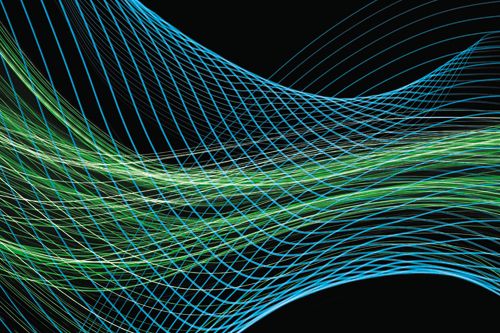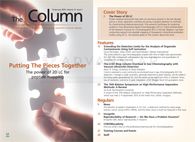Pattern Modulation Offers Alternative to Pulse Modulation in GC×GC
New research into flow modulation methods in valve-based two-dimensional gas chromatography (GC×GC) has produced an effective alternative to traditional pulse modulation.1 Described as “pattern modulation”, this new method increases effluent to the secondary column with flow rates compatible with most chromatographs and spectrometers.
Photo Credit: John Lund/Getty Images

New research into flow modulation methods in valve-based two-dimensional gas chromatography (GC×GC) has produced an effective alternative to traditional pulse modulation.1 Described as “pattern modulation”, this new method increases effluent to the secondary column with flow rates compatible with most chromatographs and spectrometers.
Researcher John Seeley from Oakland University in Rochester, Michigan, USA, said the new approach is easy to implement with existing instrumentation. “Pattern modulation can be produced with the exact same valve-based hardware used to conduct conventional pulse modulation separations”, he said, “and requires only simple software commands”.
Standard gas chromatographs require a modulator to produce comprehensive separations. These modulators convert effluent peaks emerging from the primary column into a series of sharp pulses injected into the secondary column. However, pulse generation with valve-based modulation requires a large increase in secondary column flow rate or only a small amount of primary effluent being transferred to the secondary column.
Today, most GC×GC separations are performed with thermal modulation, but that is an expensive approach. As Seeley commented, “When cost is not a factor thermal modulation will provide the best performance. But when resources are tight, valve-based modulation in all of its forms can be an extremely effective tool for generating high–resolution separations.”
Unlike pulse modulation, where narrow pulses are injected, pattern modulation uses an intricate injection pattern. This approach allows the majority of the primary effluent to reach the secondary column. However, the detector signal generated from this process must be transformed to extract a conventional pulsed signal. This is key to the analysis.
Initial results using pattern modulation were incredibly positive, but the research recognizes that there is a point where the complexity of the sample can overwhelm the signal transformation process. At this point, traditional pulse modulation is preferred.
Currently, Seeley and his team are trying to establish quantitatively when pattern modulation is superior to pulse modulation. He said, “We want to be able to recognize when pattern modulation is the best alternative for producing valve-based GC×GC separations”. - L.B.
Reference
J.V. Seeley and S.K. Seeley, J. Chrom. A1421, 114–122 (2015).

New Method Explored for the Detection of CECs in Crops Irrigated with Contaminated Water
April 30th 2025This new study presents a validated QuEChERS–LC-MS/MS method for detecting eight persistent, mobile, and toxic substances in escarole, tomatoes, and tomato leaves irrigated with contaminated water.
Accelerating Monoclonal Antibody Quality Control: The Role of LC–MS in Upstream Bioprocessing
This study highlights the promising potential of LC–MS as a powerful tool for mAb quality control within the context of upstream processing.
University of Tasmania Researchers Explore Haloacetic Acid Determiniation in Water with capLC–MS
April 29th 2025Haloacetic acid detection has become important when analyzing drinking and swimming pool water. University of Tasmania researchers have begun applying capillary liquid chromatography as a means of detecting these substances.

.png&w=3840&q=75)

.png&w=3840&q=75)



.png&w=3840&q=75)



.png&w=3840&q=75)











